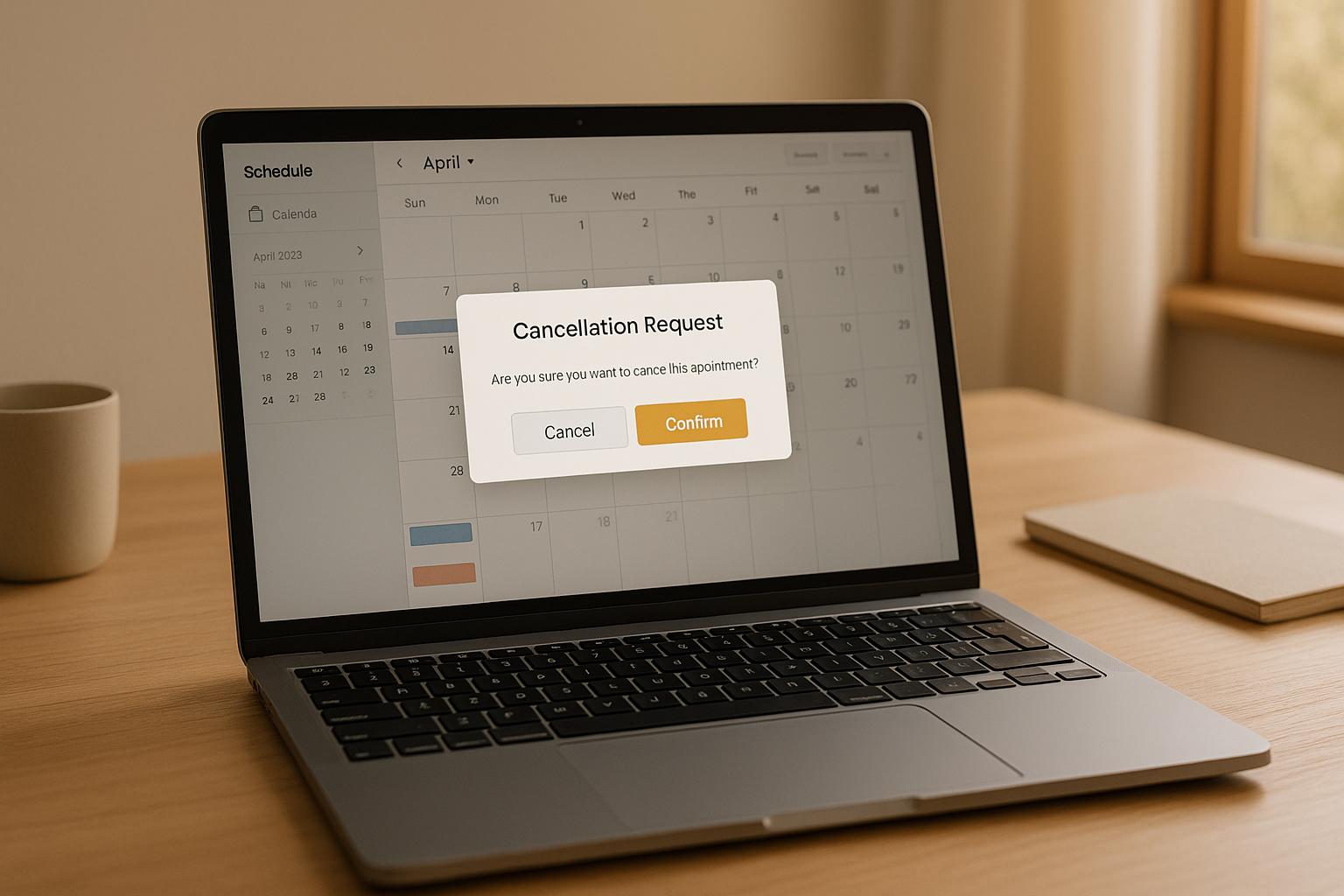Common GDPR Storage Issues and How to Solve Them
Explore common GDPR storage challenges faced by therapists and effective strategies to ensure compliance and protect client data.

Managing sensitive client data as a UK therapist under GDPR can feel overwhelming, but it doesn't have to be. Here’s a quick summary of the most frequent storage challenges therapists face and how to address them:
- Storing sensitive data securely: Paper records and unencrypted devices are risky. Use lockable filing cabinets, encrypted devices, and GDPR-compliant cloud platforms.
- Encryption issues: Many struggle with at-rest and in-transit encryption. Tools like BitLocker, FileVault, and ProtonMail can help.
- Retention and deletion: Keeping data too long or deleting it improperly is a common error. Set clear retention policies and use secure deletion methods.
- Access control: Shared systems often grant too much access. Implement role-based access and maintain audit trails.
- ICO registration: Therapists must register as data controllers, complete a Data Protection Impact Assessment (DPIA), and document compliance.
Quick solution: Use GDPR-compliant platforms like Konfidens to simplify storage, encryption, and compliance. Regularly review your policies, train staff, and follow ICO guidance to avoid costly penalties. This article breaks down each issue and offers practical steps to safeguard your practice.
Common GDPR Data Storage Problems for Therapists
Therapists face unique challenges when it comes to storing sensitive client data securely. The sensitive nature of therapeutic records - covering mental health conditions, trauma histories, and treatment plans - means they must adhere to strict GDPR requirements. Let’s dive into the most common issues therapists encounter.
Storing Sensitive Data Securely
One of the biggest hurdles is ensuring that sensitive information is protected, whether it’s stored physically or digitally. Paper records, for instance, are still widely used by therapists. However, physical filing systems often lack adequate security, leaving them vulnerable to unauthorised access. A simple filing cabinet without locks or other safeguards can be a weak link in protecting client confidentiality.
Digital storage, on the other hand, brings its own set of risks. Notes stored on personal computers, laptops, or tablets may be inadequately protected, especially if the devices are unencrypted. Losing a laptop or having it stolen could lead to sensitive client information falling into the wrong hands. This risk increases for therapists who work across multiple locations or conduct sessions at clients' homes.
Cloud storage is another tricky area. Many therapists rely on consumer-level services like Dropbox or Google Drive to store client data. While convenient, these platforms often lack the advanced security features and compliance certifications required under GDPR, making them unsuitable for handling sensitive information.
Data Encryption Problems
Encryption is a critical tool for safeguarding data, but many therapists struggle to implement it effectively. GDPR requires personal data to be processed securely, and encryption plays a key role in meeting this standard. However, the process can be complicated.
At-rest encryption protects data stored on devices or servers. Without it, client records remain exposed. Even when encryption options are available, the setup can be confusing, and concerns about managing passwords may discourage therapists from using it.
In-transit encryption ensures data is secure when being transferred, such as when session notes are emailed or reports are shared with other professionals. Unfortunately, standard email services typically lack proper encryption, making them unsuitable for transmitting sensitive information. Without clear, simple guidance on secure alternatives, therapists may find these systems too difficult to adopt.
The technical expertise required to configure encryption often exceeds what solo practitioners or small practices can manage. As a result, some therapists may avoid digital tools altogether or end up using systems that don’t meet GDPR standards.
Data Retention and Deletion Policies
GDPR’s data minimisation principle requires therapists to keep personal data only for as long as it’s needed. This poses challenges in determining how long to retain records and how to securely delete them when they’re no longer required.
Retention periods can vary depending on professional guidelines, legal requirements, or insurance policies. For example, some professional bodies might recommend retaining records for several years after therapy ends. Secure deletion, whether it involves specialised software or physical destruction of media, is essential to prevent unauthorised access.
Digital retention adds another layer of complexity. Data can be scattered across multiple platforms - computers, cloud services, backups, and mobile devices - making it difficult to ensure all copies are deleted. Without a coordinated approach, client records might linger in unexpected places, increasing the risk of non-compliance.
Access and Permissions Management
Managing who can access client data is another critical aspect of GDPR compliance. As therapy practices grow or involve multiple staff members, controlling access becomes more challenging. GDPR’s principle of least privilege dictates that only those who need access for legitimate reasons should have it.
For practices with multiple therapists, this means restricting access so that each therapist can only view their own clients’ records. However, shared systems often grant broader access than necessary, creating potential risks. Administrative staff, for example, may need access for scheduling or billing but shouldn’t have access to detailed clinical notes.
Role-based access control is the ideal solution, where different roles - such as clinicians, receptionists, and supervisors - have tailored levels of access. However, implementing this can be difficult without specialised systems. Manual methods, like shared folders, often lead to either overly restrictive access that disrupts workflows or overly permissive access that compromises data security.
Another issue is the lack of audit trails. GDPR requires organisations to track who accesses data and when, but many basic storage systems don’t offer logging features. This makes it harder to monitor access or investigate breaches effectively.
ICO Registration and Requirements
In the UK, therapists must register with the Information Commissioner’s Office (ICO) as data controllers under GDPR. However, the process can be confusing and is often overlooked. Registration fees vary depending on the size and nature of the practice, and therapists should consult the ICO’s website for accurate fee details.
Part of the registration process involves documenting the legal basis for processing sensitive data. Most therapists rely on explicit client consent or healthcare-related exemptions, but understanding these legal nuances can be challenging without expert guidance.
Therapists handling sensitive data are also required to complete a Data Protection Impact Assessment (DPIA). This document identifies potential privacy risks and outlines strategies to mitigate them. DPIAs need to be regularly updated to remain effective.
Ongoing compliance adds another layer of complexity. The ICO expects therapists to maintain up-to-date data protection policies, train staff on GDPR principles, and respond to client requests regarding their data. For solo practitioners, these ongoing responsibilities can be daunting and resource-intensive.
How to Fix GDPR Data Storage Problems
Tackling GDPR data storage issues means adopting systems that prioritise both security and ease of management. Here’s how to address these challenges effectively.
Using GDPR-Compliant Platforms
One of the simplest ways to handle GDPR storage concerns is by using a GDPR-compliant management platform. These platforms come equipped with built-in compliance tools, saving you from juggling multiple solutions.
Take Konfidens as an example. It offers end-to-end encryption, automated data retention schedules, and role-based access controls. It securely stores session notes in the cloud with enterprise-grade encryption, eliminating the need for therapists to manage their own encryption tools. For solo practitioners without IT expertise, this can be a game-changer.
When choosing a platform, make sure it includes features like automatic backups, data portability tools, and automated data deletion. These tools simplify compliance by ensuring records are securely removed once they’re no longer needed. Also, check that the platform can scale with your practice, supporting additional staff with proper access controls as you grow.
Setting Up Encryption Tools
If you prefer managing your own systems, encryption tools are essential. For full-disk encryption, use BitLocker on Windows or FileVault on macOS - both are accessible through system settings.
For encrypting individual files, free tools like 7-Zip are handy. These are particularly useful for creating secure archives of client records that need to be stored long-term or shared with other professionals.
Email encryption can be tricky, but services like ProtonMail and Tutanota offer end-to-end encrypted email, ensuring sensitive client communications are protected during both transmission and storage.
Creating Clear Data Retention Policies
A well-defined data retention policy is a cornerstone of GDPR compliance. It should outline how long data will be kept, when and how it will be deleted, and who is responsible for managing these processes.
Start by consulting guidelines from your professional body. For instance, the British Association for Counselling and Psychotherapy (BACP) advises keeping client records for at least seven years after therapy ends. However, some insurance providers or legal requirements might have different retention periods.
Document your retention schedules clearly and automate deletion wherever possible to stay compliant. For physical records, use a cross-cut shredder or hire a certified document destruction service to ensure secure disposal.
Writing Data Processing Agreements
Data Processing Agreements (DPAs) are crucial for defining how personal data is handled by third parties and staff. These agreements should specify security measures, breach notification requirements, and data handling responsibilities.
Include a clause requiring third parties to notify you of any data breach within 24 hours. This gives you time to assess the situation and report it to the Information Commissioner’s Office (ICO) if necessary.
It’s wise to consult a solicitor with expertise in data protection law to review your agreements. While this may seem like an upfront expense, it can save you from serious compliance headaches down the road.
Following ICO Guidelines
The ICO offers detailed guidance tailored to healthcare professionals, including therapists. Regularly reviewing their resources can help you stay on top of compliance requirements.
Use the ICO Self-Assessment Toolkit to evaluate your compliance. This free tool covers key areas like lawful data processing, consent management, and breach response protocols.
Keep your documentation up to date, including privacy notices, consent forms, and breach response procedures. The ICO expects organisations to provide evidence of compliance, so having thorough records is essential.
Finally, schedule annual compliance reviews to ensure your data protection measures align with current ICO guidelines. This proactive approach not only helps you identify potential risks but also demonstrates your commitment to maintaining high standards of compliance.
Common GDPR Storage Mistakes to Avoid
Building on the solutions discussed earlier, let's explore some common pitfalls that could jeopardise GDPR compliance.
Not Encrypting Devices or Notes
One of the biggest risks therapists face is using unencrypted laptops or tablets. If such devices are lost or stolen, sensitive client data becomes vulnerable to anyone who gains access. This kind of data breach must be reported to the ICO within 72 hours - a situation no one wants to face.
The same goes for physical notes. Storing handwritten session notes in unlocked filing cabinets or leaving them in your car boot unnecessarily exposes confidential information. Even at home, family members or visitors could accidentally stumble upon private client records.
To mitigate these risks, enable full-disk encryption on all devices containing client data. If you’re unsure how, refer to the earlier section for guidance. For physical notes, invest in a fireproof, lockable filing cabinet. Keep the keys securely stored away from the cabinet itself, and for particularly sensitive records, consider using a small safe. When transporting notes, use a locked briefcase instead of leaving files visible in your vehicle. These simple steps can make a big difference in protecting client data.
Using Non-Compliant Cloud Services
Another common mistake is relying on non-compliant cloud storage services. Many therapists unknowingly use consumer-grade platforms that fall short of GDPR requirements, particularly when it comes to data location and security.
The main issue lies in where your data is stored and processed. Some services store data across multiple countries, including outside the EU, without adequate safeguards. They may also lack the robust security controls needed to protect sensitive health information.
Before choosing a cloud service, confirm it provides Business Associate Agreements or similar data processing agreements. Check the geographical location of their servers and ensure they hold certifications appropriate for handling healthcare data.
Platforms designed with GDPR compliance in mind, such as Konfidens, can simplify this process. They store data on EU-based servers with strong encryption and access controls, allowing you to focus on your clients without worrying about technical compliance.
Keeping Records Too Long or Deleting Them Incorrectly
Holding on to client records longer than necessary can lead to unnecessary risks. The longer you retain data, the greater the chances of a breach and the more complex your compliance responsibilities become.
On the flip side, deleting records too soon can also cause problems. Some therapists, for example, delete client files immediately after therapy ends, not realising they might need them later for insurance claims or legal purposes.
Even worse, improper deletion methods - like simply moving files to the recycle bin or formatting a hard drive - don’t actually erase the data. Forensic tools can often recover this information, creating ongoing privacy risks.
To avoid these issues, set clear retention schedules as outlined earlier. Use secure deletion software to permanently remove digital files by overwriting them multiple times. For physical records, invest in a cross-cut shredder or hire a certified document destruction service. Always retain certificates of destruction as proof that the data was disposed of properly. These practices help safeguard the privacy of both current and former clients.
Missing Client Consent
Relying on implied consent for storing and processing data is a serious mistake. GDPR requires explicit, informed consent, and it must be properly documented.
Many therapists still use outdated consent forms that fail to specify how data will be stored, who will have access, and how long it will be retained. Generic privacy notices downloaded online often miss critical details about your specific practices.
Verbal consent without proper documentation can also leave you exposed if a client later questions your data handling methods.
To address this, create detailed consent forms that clearly outline your data handling practices. Include specifics about cloud storage, session recordings, note-taking, and data sharing with other professionals. Use plain English to ensure clients fully understand what they’re agreeing to, avoiding legal jargon that could confuse them.
Regularly update your consent forms to reflect any changes in your practices. If you introduce a new system or adjust your data handling procedures, make sure to obtain fresh consent from existing clients. Keep signed consent forms with client records as proof of authorisation.
For added efficiency, consider using digital consent management tools. These tools can timestamp agreements and track when consent was given or withdrawn, providing a clear audit trail that demonstrates your commitment to proper consent management.
sbb-itb-0b4edca
Benefits of GDPR-Compliant Practice Management Platforms
Building on the earlier challenges, GDPR-compliant platforms offer practical solutions tailored to the specific needs of therapists managing sensitive client information. These systems are purpose-built to address the unique demands of secure data storage and regulatory compliance.
Secure and Centralised Storage
A GDPR-compliant platform brings all your client data - paper files, digital notes, appointment records - into one secure, centralised system. This streamlined approach not only makes data easier to access but also provides clear audit trails, showing who accessed what and when.
This level of organisation simplifies managing client data requests or deletion processes. You’ll have confidence that your storage methods align with GDPR standards, offering peace of mind while reducing the stress of compliance.
Automated Compliance Features
Automation is a game-changer when it comes to GDPR compliance. Features like automated retention schedules and data deletion tasks remove the need for manual oversight, ensuring that records adhere to GDPR timelines effortlessly [1][2].
For example, Konfidens automates data retention and deletion. When a client’s data retention period expires, the platform flags or deletes the records according to your policies, minimising manual effort while maintaining compliance. It also generates detailed audit trails and access logs, which are invaluable if the Information Commissioner’s Office (ICO) ever requests proof of compliance.
Other automated tools include appointment reminders and built-in consent management. These systems meticulously track client permissions, timestamp agreements, and monitor when consent is given or withdrawn. This is especially useful as guidelines vary: the British Psychological Society (BPS) suggests private practice psychologists keep records for 7 years, while NHS guidelines recommend retaining them for up to 20 years after treatment or 10 years after death [1]. Automating these timelines makes managing compliance far less overwhelming.
Scalability for Growing Practices
One of the standout advantages of GDPR-compliant platforms is their ability to scale with your practice. Whether you’re a solo practitioner or managing a larger clinic, these systems adapt without compromising on security or compliance.
As your practice expands, role-based access controls allow you to manage permissions effectively. For instance, reception staff can access appointment schedules without seeing sensitive session notes, while supervisors can review selected cases while preserving client confidentiality. These nuanced permission structures are handled automatically by professional platforms.
Konfidens illustrates this scalability with flexible plans that cater to individuals and multi-clinic operations alike. Whether you're on the free plan or the Pro plan at £29 per month per user, the platform maintains the same high security standards.
Additionally, as your team grows, so does the complexity of compliance. More staff means more access points and more data to manage. A centralised administration system ensures consistent security policies across the board, making it easier to maintain compliance as your practice evolves.
This seamless infrastructure lets therapists focus on what truly matters - providing quality client care - while staying aligned with legal requirements.
Conclusion
Adhering to GDPR regulations is crucial for maintaining trust and protecting your therapeutic practice. While challenges like secure data storage, encryption, and managing client consent may feel overwhelming, there are practical ways to address them.
The key is to combine reliable technology with clear, well-defined processes. Instead of juggling multiple systems, consider using a specialised platform like Konfidens. Its secure data storage and compliance-focused features can simplify the process and reduce administrative workload, leaving you with more time to focus on your clients.
It’s important to keep in mind that GDPR compliance isn’t a one-time task. Regular reviews, staying updated with ICO guidance, and revising policies as needed are essential steps to safeguard your practice. With affordable options like the Konfidens Solo plan at £19 and Pro plan at £29 per user, staying compliant is a manageable investment - especially when compared to the potential risks and costs of non-compliance or data breaches.
FAQs
What steps can therapists take to ensure their data storage complies with GDPR?
To comply with GDPR, therapists need to adopt practices that ensure data is stored securely and handled lawfully. Start by setting specific data retention periods in line with legal and professional guidelines. For example, in the UK, client records are often required to be kept for a minimum of 7 years. Whether data is stored digitally or physically, using secure storage methods is essential. Additionally, clients should be kept in the loop through clear and transparent privacy policies that explain how their information is managed.
It's also important to regularly review stored data, securely dispose of anything no longer needed, and keep records of these actions to show compliance. Periodic evaluations of your data management practices can help ensure they align with GDPR requirements and maintain accountability. By taking these steps, therapists can safeguard client confidentiality while meeting their professional obligations.
What are the best ways to securely encrypt sensitive client data, both when stored and shared?
When it comes to safeguarding sensitive client information, encryption plays a key role. For data stored on devices or servers (data at rest), techniques like full disk encryption or file encryption offer a layer of protection. These methods ensure that even if a device is lost or stolen, the information remains secure and inaccessible.
For data being shared online (data in transit), secure protocols such as TLS (Transport Layer Security) are indispensable. Whether it's emails, video calls, or other forms of communication, TLS helps prevent unauthorised interception. Implementing these encryption measures not only reduces risks but also ensures compliance with GDPR regulations.
Why should therapists regularly review and update their data retention and deletion policies under GDPR?
Keeping your data retention and deletion policies up to date is a key part of staying compliant with GDPR requirements. It ensures you only hold on to client information for as long as it's needed, reducing the chances of data breaches and respecting clients' rights - like their right to request data erasure.
Neglecting these updates can have serious consequences, including legal fines, harm to your reputation, and even the risk of losing accreditation. By handling data responsibly, you show professionalism, protect sensitive client information, and strengthen the trust your clients place in you.




